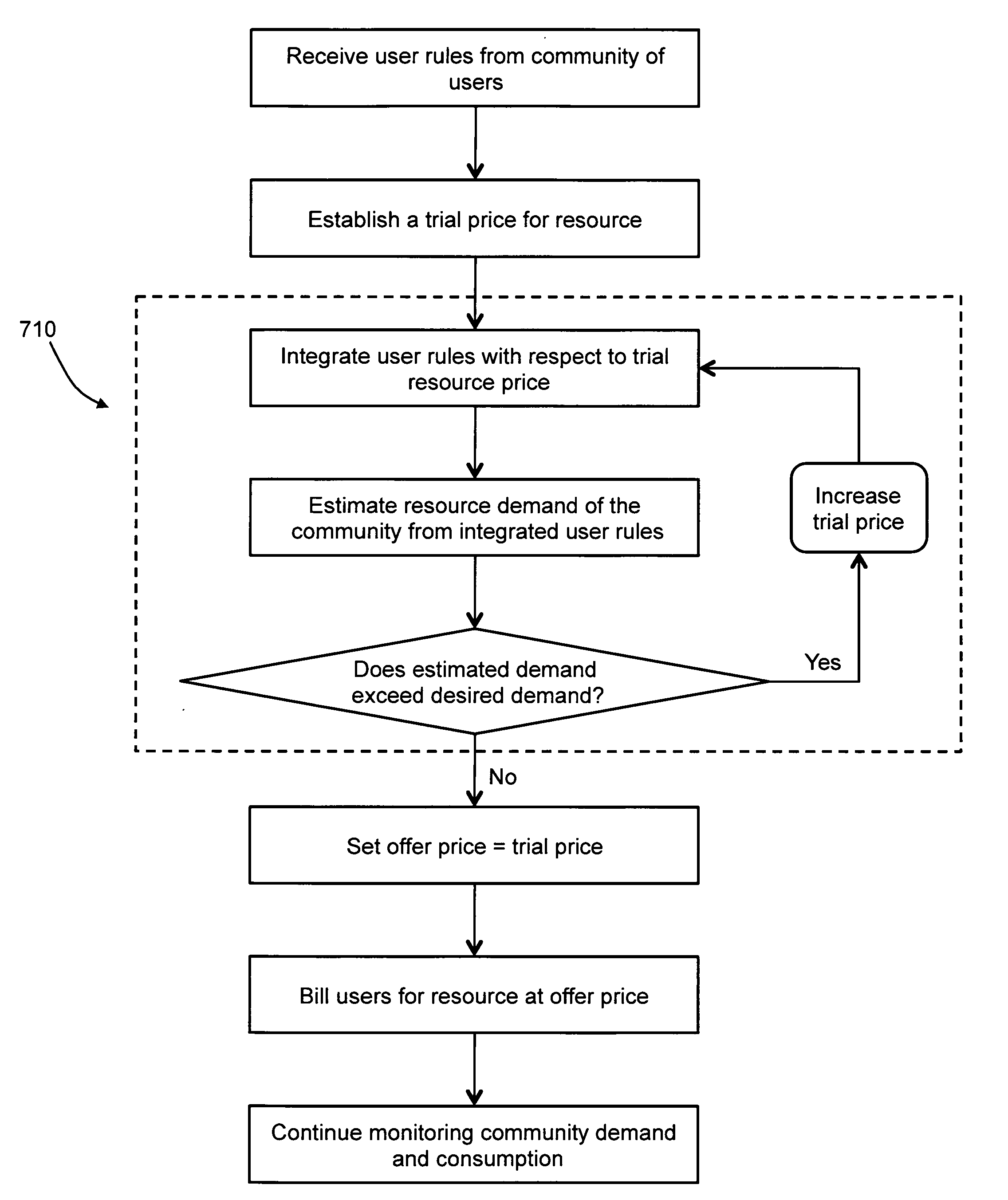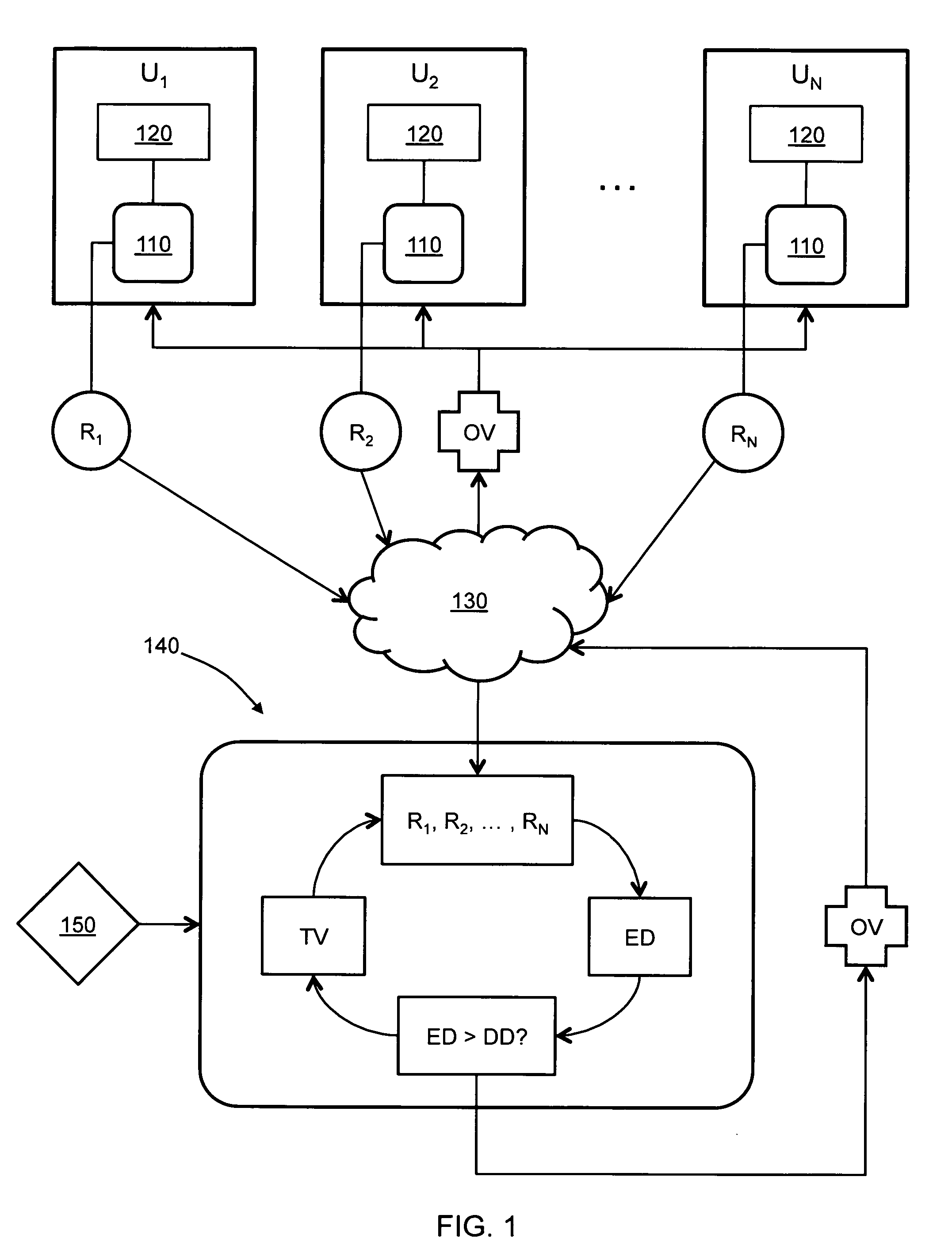Iterative real-time auction for resource management with user rules
a resource management and user-defined technology, applied in the field of resource management, can solve the problems of limited energy storage capacity, overpowering the capacity of energy suppliers, and consuming enormous energy for heating and cooling of residential and commercial buildings
- Summary
- Abstract
- Description
- Claims
- Application Information
AI Technical Summary
Benefits of technology
Problems solved by technology
Method used
Image
Examples
Embodiment Construction
[0018]Managing resource consumption, particularly for balancing demand and supply, can be a difficult task. Current resource providers typically control the amount of resources consumed by managing the supply-side. For example, electric utility companies employ rolling blackouts to completely cut off electric power consumption of a neighborhood, thereby reducing the power demand during peak periods for the entire electric utility district. Obviously, blackouts are not desired by consumers and can even lead to casualties in extreme weather conditions. The present invention is directed to resource management with an iterative real-time auction with user-defined rules.
[0019]FIG. 1 shows an embodiment of a utility resource management system according to the present invention. The resource management system includes a community of users U1-UN and a utility manager 140, both connected to a communication network 130, such as the Internet. The community of users U1-UN can be any group of co...
PUM
 Login to View More
Login to View More Abstract
Description
Claims
Application Information
 Login to View More
Login to View More - R&D
- Intellectual Property
- Life Sciences
- Materials
- Tech Scout
- Unparalleled Data Quality
- Higher Quality Content
- 60% Fewer Hallucinations
Browse by: Latest US Patents, China's latest patents, Technical Efficacy Thesaurus, Application Domain, Technology Topic, Popular Technical Reports.
© 2025 PatSnap. All rights reserved.Legal|Privacy policy|Modern Slavery Act Transparency Statement|Sitemap|About US| Contact US: help@patsnap.com



